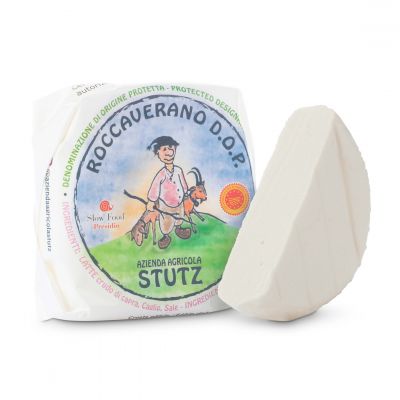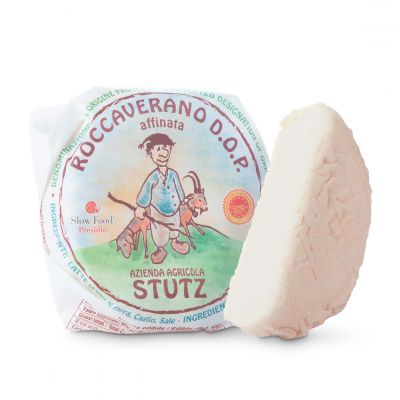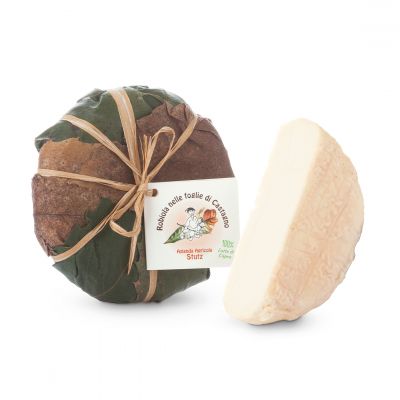We would like to tell you about our visit to a family business who cares about animals and nature, and who produces the authentic Robiola di Roccaverano DOP
⏱ 4 MINUTES READING
We arrive in the Langhe area of Asti on a July afternoon, the sun shining down on the stone tower next to the dairy. Our travel program includes a visit to the Stutz farm as the second stop after the visit to Pesto di Pra'. We are all a little tired and sweated: in the morning we climbed the terraces of Genova Pra' to see the greenhouses, the cultivation of basil and the processing of pesto.
We drag ourselves out of the coach, dazed by the summer heat, the switchbacks and the digestion, but we immediately regain some verve. The landscape is suggestive, valleys and hills follow one another in an intense green as far as the eye can see, the scent of Mediterranean grass and shrubs refreshes our spirits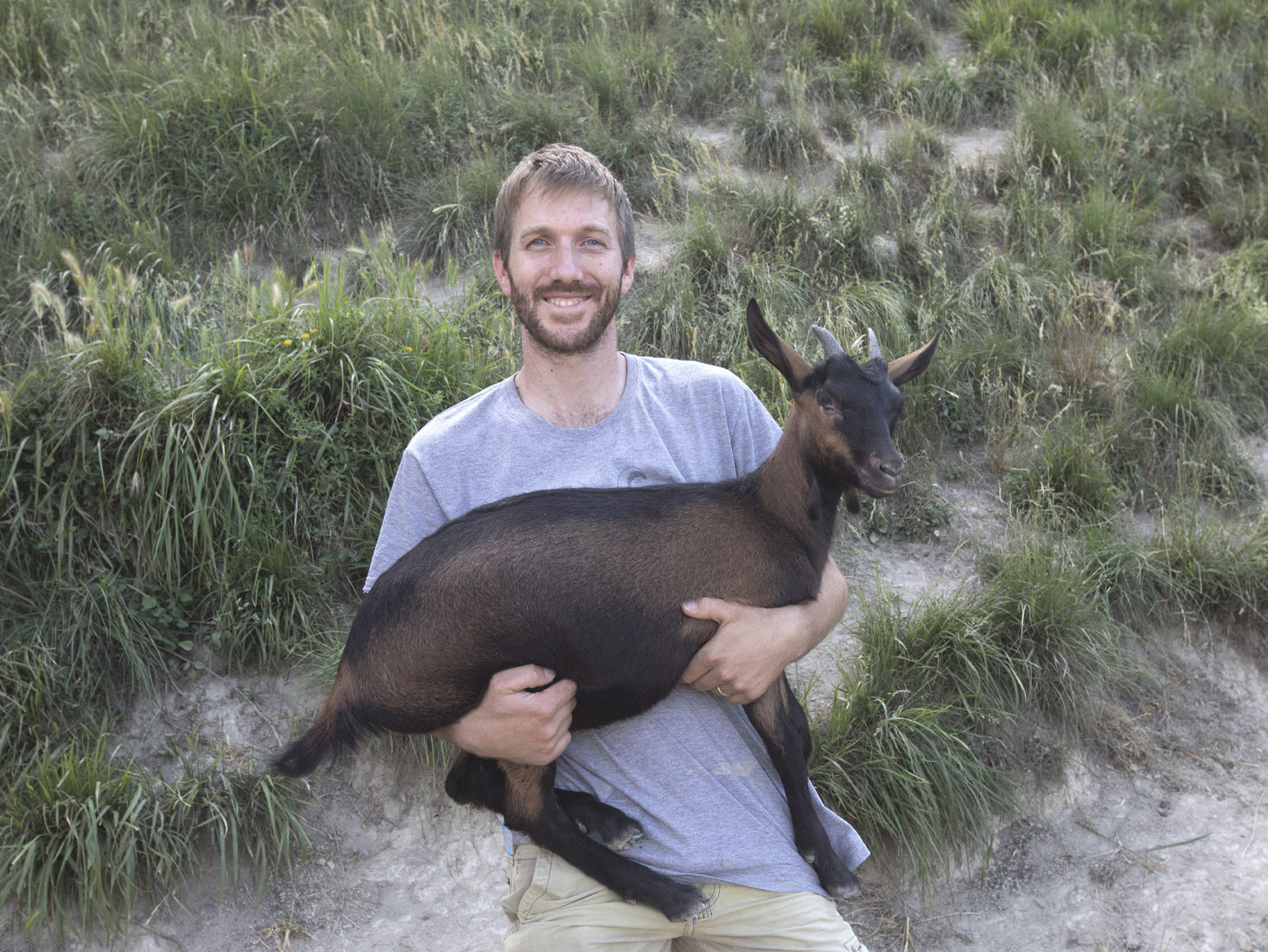
Jerome joins us, but first of all we meet his cheeky little daughter Amélie, who will accompany us throughout the visit.Let's start with the stable. "Too hot to keep the goats grazing, they prefer to stay indoors".
But let's take a step back for those who don't know the Stutz family yet. It all starts with love at first sight - or a stroke of mind, depending on your point of view: Jerome's parents, of Swiss origin, learn from a friend that there is a farmhouse for sale in the Langhe Astigiane.
They see it, fall in love, and decide to buy it. André Pfister and Simone Stutz had already attended an agricultural school in Switzerland and had been looking for a farm for some time to start their business. Bewitched by the Mombaldone farm, they decide to move to Italy with their two children, to get away from the rhythms of the city, get back in touch with nature, raise goats and produce cheese. The two children are Jerome and his brother Ramon, who today run the farm together with their parents.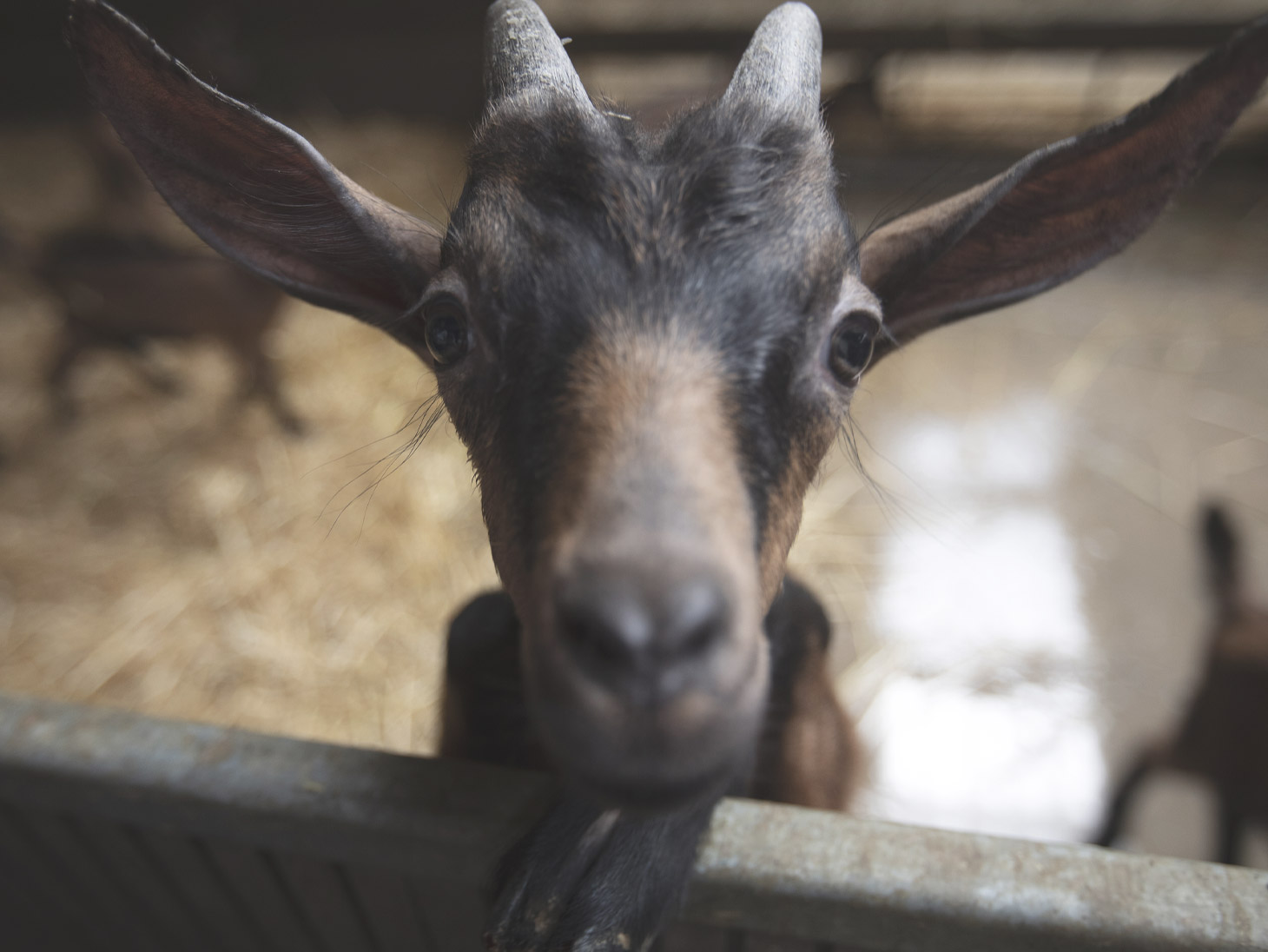
Weel-known for their Robiola di Roccaverano, the Stutz family manages the entire production chain, starting from breeding: about 300 goats of the Camosciata breed and a few heads of the native Roccaverano goat's breed, all reared in a semi-wild state. Half of the goats are managed by Jerome in Mombaldone, where there is also the dairy, the other flock by Ramon in Roccaverano.
Mombaldone is a village of 200 souls in the province of Asti, in the south east of Piedmont. It is part of the association "I Borghi più belli d'Italia" - the most beautiful hamlets in Italy - but like many small village it is suffering from depopulation, with the number of inhabitants reduced to less than a third within three generations. Yet the Stutz family has adopted these wild hills, gullies with rugged and uncultivated slopes, full of brambles and shrubs, not very suitable for modern agriculture, but perfect for goat breeding.
"The two flocks are grazed from March to November, for nine months a year, as required by the Robiola di Roccaverano DOP disciplinary. We manage the grazing in rotation, to keep the woods clean and not damage the meadows, but we have the need to accompany the goats to pasture also because there are wolves here".
Only in the grazing season, the Robiola produced with pure raw goat's milk becomes a Slow Food Presidium, certified by the sticker on the label: the Stutz farm is one of the two producers which respect the Slow Food requirement for Robiola di Roccaverano.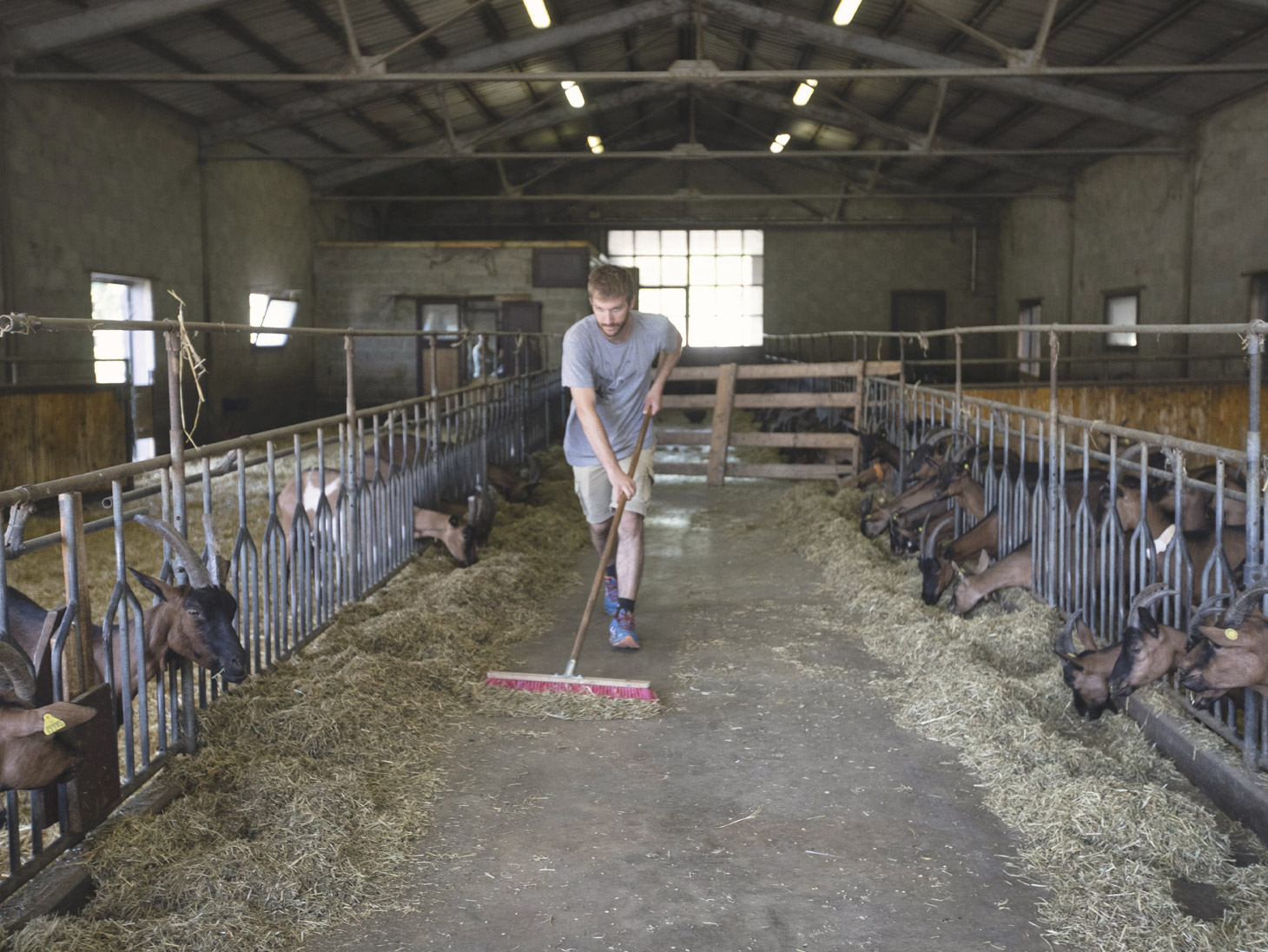
The barn is very clean, it only gives back the scent of the hay: even in summer, the diet is still integrated to support milk production, with a feed 80% based on local forage and hay, grains of barley and oats, alfalfa.
Next to the bunks we can notice the milking hall, which is raised from the floor, where the goats go up on their own because they know they will find an extra ration of food.
While cooling down in the stable, we ask Jerome to tell us not only about his company, but also his personal story: 35 years old, a very young wife, Sara, two little children, Amélie and Jonas. After spending his childhood in the Langhe area, where he already knew the art of milking the goats at the age of 6, Jerome decided to leave his family to attend a drama school in London. In few years returned home, met with Sara who marries his whole life project and together they renew the family choice to live in nature.
But there is much more: the ability to bring home what he has learned around the world, to produce a refined, clean, super elegant Robiola di Roccaverano, a real jewel in the panorama of fresh Italian goat cheeses, which in 2006 won the "Grolla d'oro" prize in Saint-Vincent as the best cheese in Italy.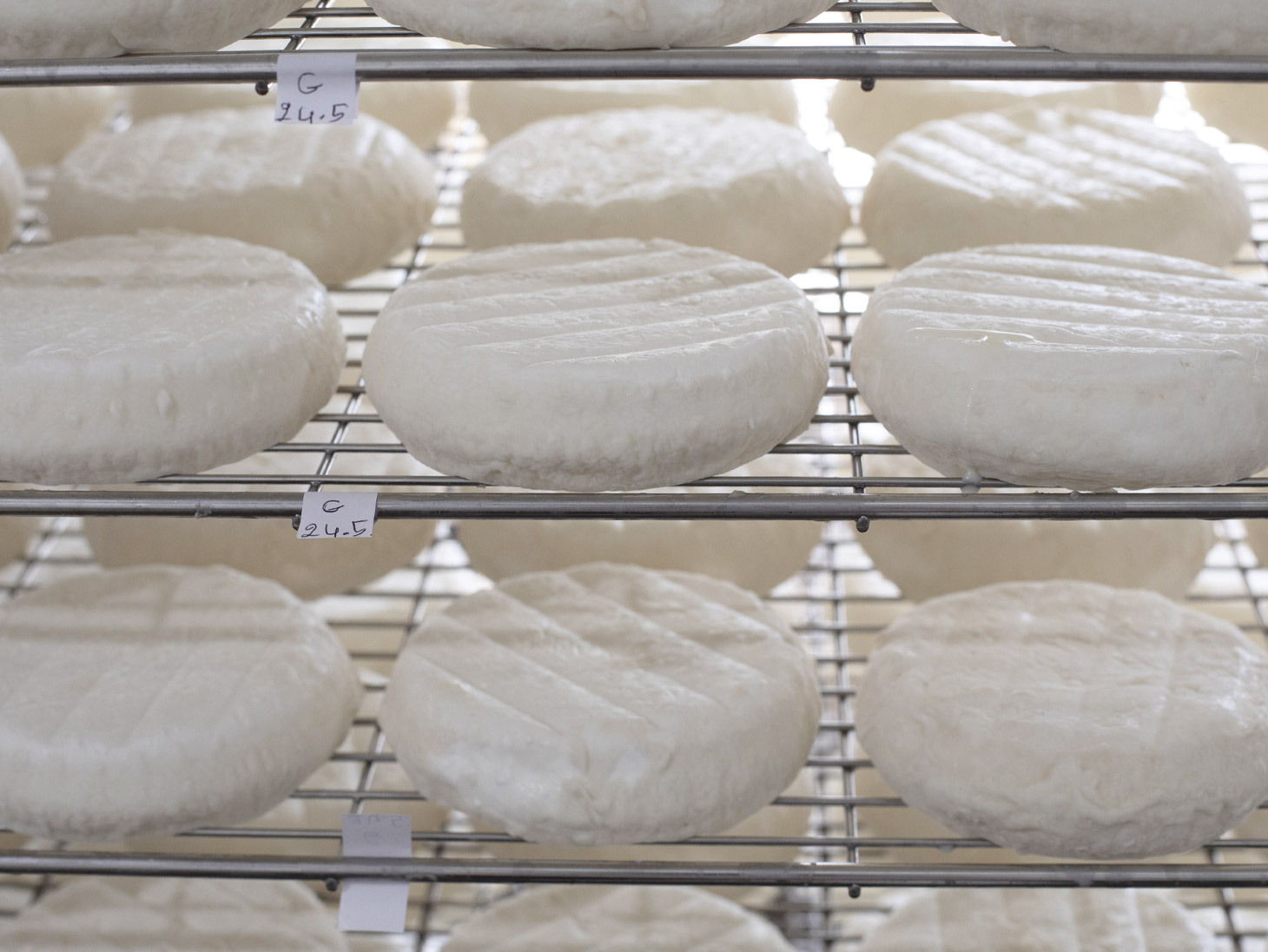
"The milking is done twice a day, 12 goats at a time: when we finish to connect to the milking machine the last goat, the first one has already finished, and in two hours we manage to milk all 150 of them. The average milk production is 3,5 liters per head per day: almost 2 liters per milking, 3 for the best heads".
The processing is done once a day, in the morning: the self produced milk-starter is added to the evening milk, to make it acidify during the night, then the fresh milk from the morning milking is added. Robiola di Roccaverano can be defined as an acid coagulation goat cheese produced with whole milk and Jerome only processes the raw milk from his own flocks. Very little calf rennet is used and the coagulation is very slow, it requires around 22 hours. The day after, the acid curd is placed in the baskets and salted: a delicate process, which must be done very slowly, one bucket at a time, because the curd needs to be broken as little as possible, so that the whey is purged more slowly. Preserving the integrity of the clot is essential for having a quality robiola. Equally important is the temperature of the dairy, which must be around 20°C.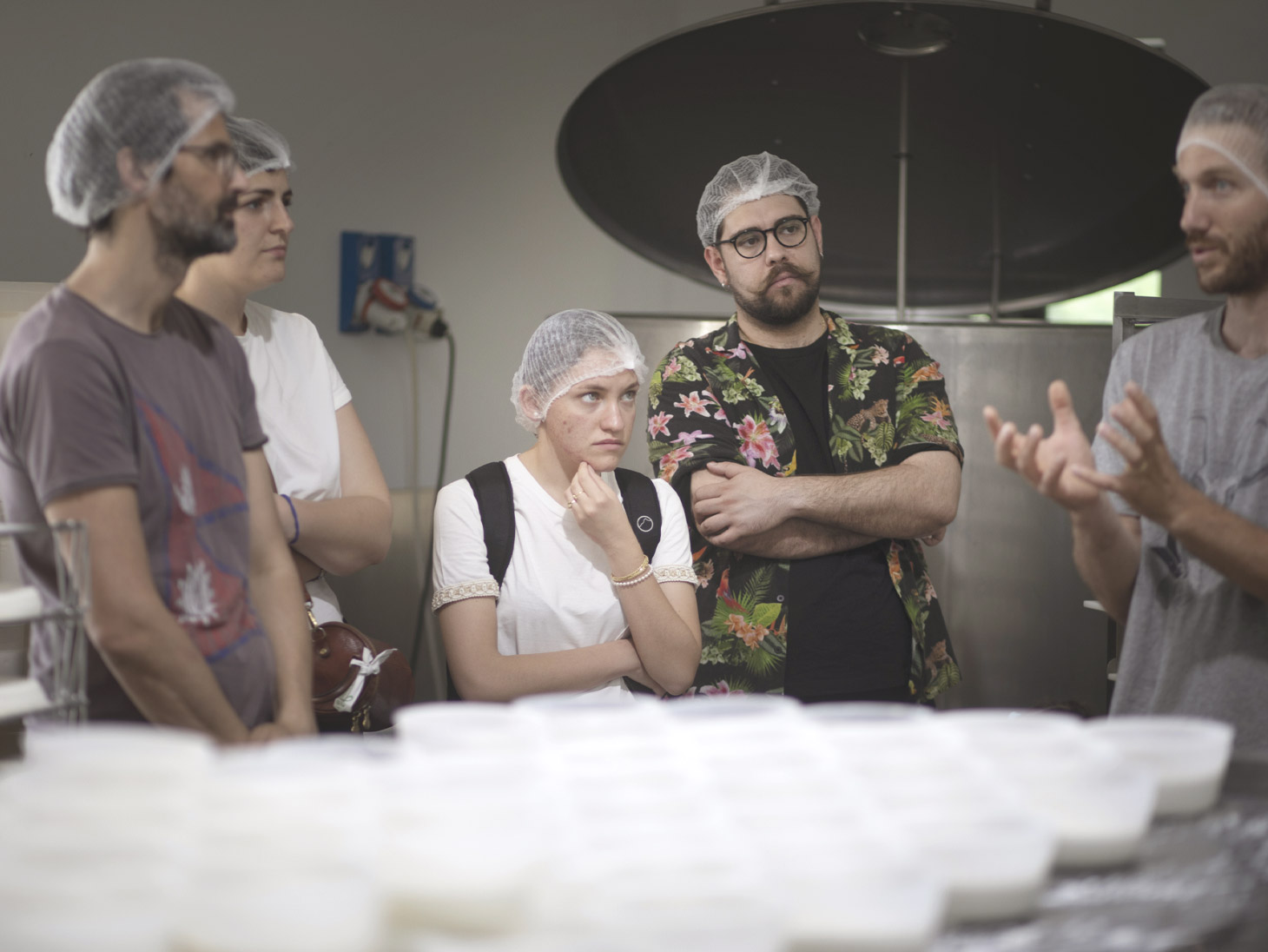
It is really unbelievable how low is the yield: to obtain a single robiola cheese we need to fill a two-litre basket, about 20 cm high - Jerome tells us that each goat produces about two robiola cheeses per day, for 9 months a year (in the other 3 months they don't produce milk)!
The day after processing, the robiola are turned over and salted again. The fresh robiola is packaged after four days. From the fifth day, on the other hand, the cheeses that need to be refined are washed with water and salt to favor the development of the Geotrichum, then placed in a cold room at 4°C to slow down the maturation and develop a light wrinkled skin. After 15 days, part of the cheese wheels is packaged with paper to become Robiola di Roccaverano affinata (aged), the others wrapped in fig or chestnut leaves to continue maturation for another three weeks.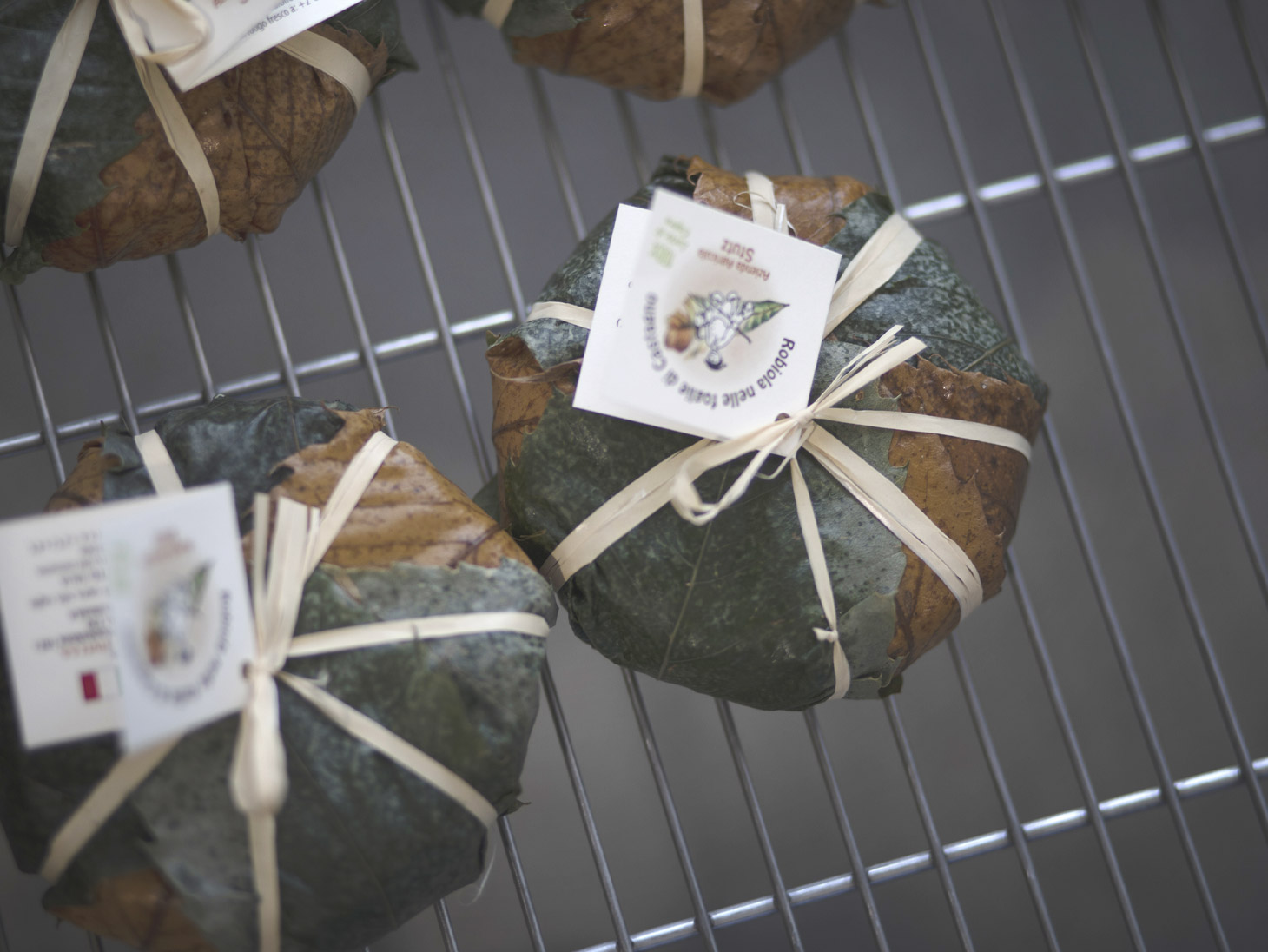
The leaves used for aging are locally sourced: they are harvested in the farm woods and frozen. The handiness required is truly impressive: each robiola is hand-wrapped in the leaves, one by one, that are perfectly stretched and preserved, then tied with raffia and stored away for ageing.
Amélie is impatient to accompany us to her favorite corner of the company: the nursery. In a few minutes we are all contaminated by her enthusiasm and with heart eyes we compete to caress the cuddly puppies who climb up to be pampered as much as they can.
After the pet therapy, one more cuddle awaits us: a tasting of Jerome's four robiola cheeses, the choice is ours whether en-plen-air or in the circular tasting room inside the tower, with the natural coolness of the old stone buildings.
What to say? Roccaverano di Roccaverano DOP aged by Jerome is my favorite cheese, the only goat cheese in Italy that competes with its cousins from beyond the Alps, gorgeous!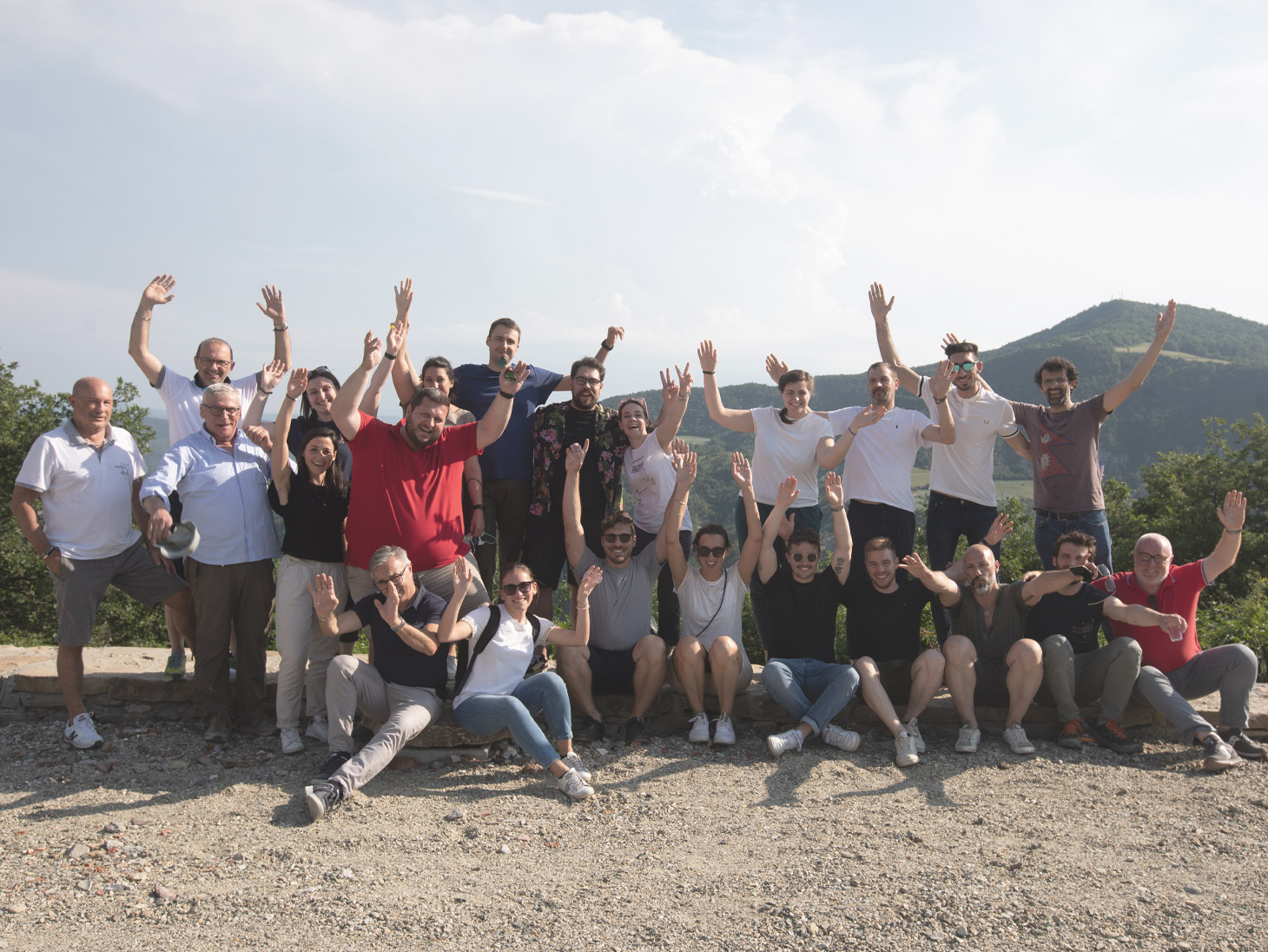
Martina Iseppon
Marketing Director




